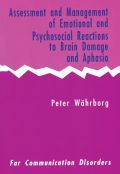
Wireless communications is destined to become a dominant communications technology. Brimming with practical examples with summaries, review questions, end-of-chapter problems, and a solutions manual, RF Power Amplifiers presents accessible coverage of the complex principles of operation of RF power amplifiers and radio power systems. Based on the author's graduate course, the text introduces the fundamental design techniques and procedures for practitioners of RFpower amplifiers for graduate and senior level undergraduate students, professional design engineers, computer engineers, environmental engineers, physicists, military engineers, radar engineers, and telecommunications engineers. INDICE: Preface About the Author List of Symbols 1 Introduction 1.1 Block Diagram of RF Power Amplifiers 1.2 Classes of Operation of RF Power Amplifiers1.3 Parameters of RF Power Amplifiers 1.4 Conditions for 100% Efficiency of Power Amplifiers 1.5 Conditions for Nonzero Output Power at 100% Efficiency of Power Amplifiers 1.6 Output Power of Class E ZVS Amplifier 1.7 Class E ZCS Amplifier 1.8 Propagation of Electromagnetic Waves 1.9 Frequency Spectrum 1.10 Duplexing 1.11 Multiple-access Techniques 1.12 Nonlinear Distortion in Transmitters 1.13 Harmonics of Carrier Frequency 1.14 Intermodulation 1.15 Dynamic Range of Power Amplifiers 1.16 Analog Modulation 1.16.1 Amplitude Modulation 1.17 Digital Modulation 1.18 Radars 1.19 Radio-frequency Identification 1.20 Summary 1.21 References 1.22 Review Questions 1.23 Problems 2 Class A RF Power Amplifier 2.1 Introduction 2.2 Circuit of Class A RF Power Amplifier 2.3 Power MOSFET Characteristics 2.4 Waveforms of Class A RF Amplifier 2.5 Parameters of Class A RF Power Amplifier 2.6 Parallel-resonant Circuit 2.7 Power Losses and Efficiency of Parallel Resonant Circuit 2.8 Impedance Matching Circuits 2.9 ClassA RF Linear Amplifier 2.10 Summary 2.11 References 2.12 Review Questions 2.13Problems 3 Class AB, B, and C RF Power Amplifiers 3.1 Introduction 3.2 Class B RF Power Amplifier 3.3 Class AB and C RF Power Amplifiers 3.4 Push-pull Complementary Class AB, B, and C RF Power Amplifiers 3.5 Transformer-coupled ClassB Push-pull Amplifier 3.6 Class AB, B, and C Amplifiers of Variable-envelope Signals 3.7 Summary 3.8 References 3.9 Review Questions 3.10 Problems 4 Class D RF Power Amplifier 4.1 Introduction 4.2 Circuit Description 4.3 Principle ofOperation 4.4 Topologies of Class D Voltage-source RF Power Amplifiers 4.5 Analysis 4.6 Voltage Transfer Function 4.7 Bandwidth of Class D Amplifier 4.8 Efficiency of Half-bridge Class D Power Amplifier 4.9 Design Example 4.10 Class D RF Power Amplifier with Amplitude Modulation 4.11 Transformer-coupled Push-pull Class D Voltage-switching RF Power Amplifier 4.12 Class D Full-bridge RF Power Amplifier 4.13 Phase Control of Full-bridge Class D Power Amplifier 4.14 Class D Current-switching RF Power Amplifier 4.15 Transformer-coupled Push-pull Class D Current-switching RF Power Amplifier 4.16 Bridge Class D Current-switching RF Power Amplifier 4.17 Summary 4.18 References 4.19 Review Questions 4.20 Problems 5 Class E RF Zero-voltage-switching RF Power Amplifier 5.1 Introduction 5.2 Circuit Description 5.3 Circuit Operation 5.4 ZVS and ZDS Operationof Class E Amplifier 5.5 Suboptimum Operation 5.6 Analysis 5.7 Maximum Operating Frequency 5.8 Choke Inductance 5.9 Summary of Parameters at D = 0.5 5.10 Efficiency 5.11 Design of Basic Class E Amplifier 5.12 Impedance Matching Resonant Circuits 5.13 Push-pull Class E ZVS RF Amplifier 5.14 Class E ZVS RF PowerAmplifier with Finite DC-feed Inductance 5.15 Class E ZVS Amplifier with Parallel-series Resonant Circuit 5.16 Class E ZVS Amplifier with Nonsinusoidal Output Voltage 5.17 Class E ZVS Power Amplifier with Parallel Resonant Circuit 5.18 Amplitude Modulation of Class E ZVS RF Power Amplifier 5.19 Summary 5.20 References 5.21 Review Questions 5.22 Problems 6 Class E Zero-current-switching RF Power Amplifier 6.1 Introduction 6.2 Circuit Description 6.3 Principle of Operation 6.4 Analysis 6.5 Power Relationships 6.6 Element Values of Load Network 6.7 Design Example 6.8 Summary 6.9 References 6.10 Review Questions 6.11 Problems 7 Class DE RF Power Amplifier 7.1 Introduction 7.2 Analysis of Class DERF Power Amplifier 7.3 Components 7.4 Device Stresses 7.5 Design Equations 7.6 Maximum Operating Frequency 7.7 Class DE Amplifier with Only One Shunt Capacitor 7.8 Components 7.9 Cancellation of Nonlinearities of Transistor Output Capacitances 7.10 Summary 7.11 References 7.12 Review Questions 7.13 Problems 8 Class F RF Power Amplifier 8.1 Introduction 8.2 Class F RF Power Amplifier with Third Harmonic 8.3 Class F RF Power Amplifier with Third and Fifth Harmonics8.4 Class F RF Power Amplifier with Third, Fifth, and Seventh Harmonics 8.5 Class F RF Power Amplifier with Parallel-resonant Circuit and Quarter-wavelength Transmission Line 8.6 Class F RF Power Amplifier with Second Harmonic 8.7 Class F RF Power Amplifier with Second and Fourth Harmonics 8.8 Class F RF PowerAmplifier with Second, Fourth, and Sixth Harmonics 8.9 Class F RF Power Amplifier with Series-resonant Circuit and Quarter-wavelength Transmission Line 8.10 Summary 8.11 References 8.12 Review Questions 8.13 Problems 9 Linearization and Efficiency Improvement of RF Power Amplifiers 9.1 Introduction 9.2 Predistortion 9.3 Feedforward Linearization Technique 9.4 Negative Feedback Linearization Technique 9.5 Envelope Elimination and Restoration 9.6 Envelope Tracking 9.7 The Doherty Amplifier 9.8 Outphasing Power Amplifier 9.9 Summary 9.10 References 9.11 Review Questions 9.12 Problems 10 Integrated Inductors 10.1 Introduction 10.2 Skin Effect 10.3 Resistance of Rectangular Trace 10.4 Inductance of Straight Rectangular Trace 10.5 Meander Inductors 10.6 Inductance of Straight Round Conductor 10.7 Inductance of Circular Round Wire Loop 10.8 Inductance of Two-parallel Wire Loop 10.9 Inductance of Rectangle of Round Wire 10.10 Inductance of Polygon Round Wire Loop 10.11 Bondwire Inductors 10.12 Single-turn Planar Inductors 10.13 Inductance of Planar Square Loop 10.14 Planar Spiral Inductors 10.15 Multimetal Spiral Inductors 10.16 Planar Transformers 10.17 MEMSInductors 10.18 Inductance of Coaxial Cable 10.19 Inductance of Two-wire Transmission Line 10.20 Eddy Currents in Integrated Inductors 10.21 Model of RF Integrated Inductors 10.22 PCB Integrated Inductors 10.23 Summary 10.24 References 10.25 Review Questions 10.26 Problems Appendices Appendix A SPICE Model of Power MOSFETs Appendix B Introduction to SPICE Appendix C Introduction to MATLAB Answers to Problems Index
- ISBN: 978-0-470-77946-0
- Editorial: John Wiley & Sons
- Encuadernacion: Cartoné
- Páginas: 432
- Fecha Publicación: 10/10/2008
- Nº Volúmenes: 1
- Idioma: Inglés
